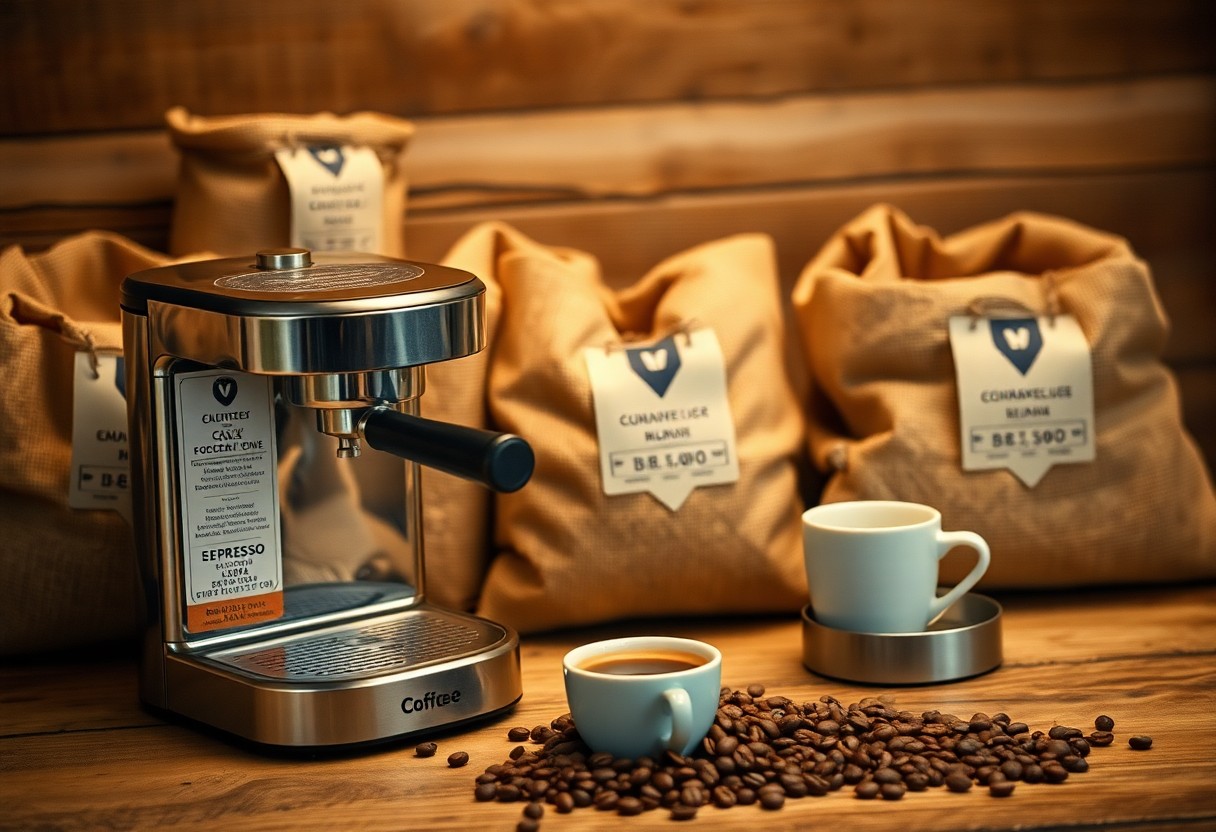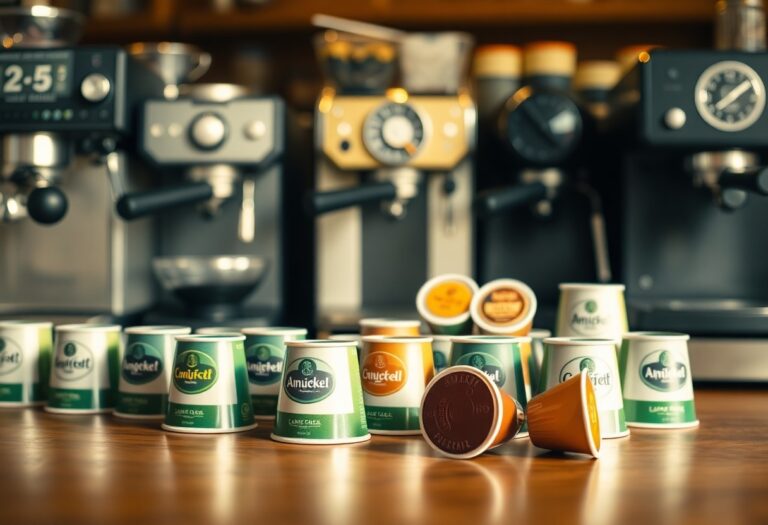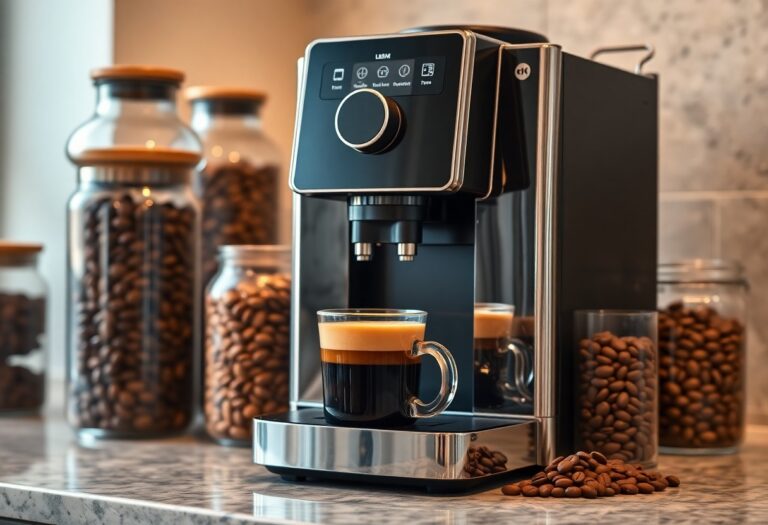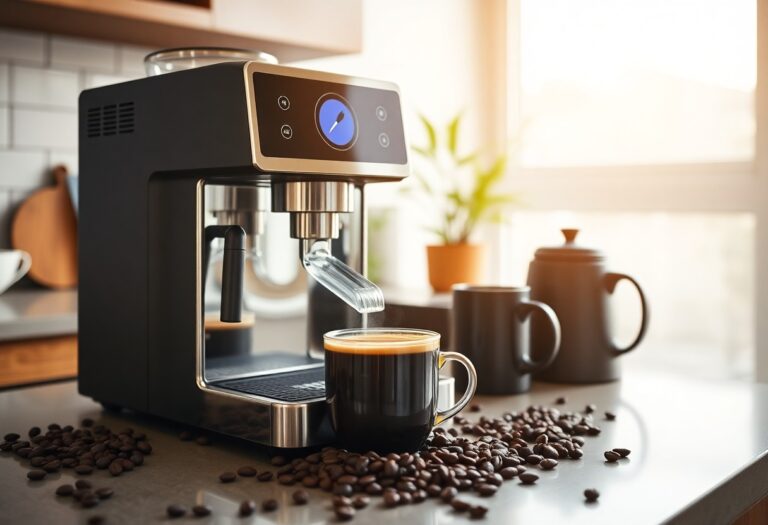What is the Best Coffee for an Espresso Machine – Premium Beans
Beans are at the heart of a perfect espresso, and choosing the right premium coffee can elevate your brewing experience. When you select your beans, consider factors like bean origin, roast profile, and flavor notes to match your personal taste. High-quality beans will deliver rich, complex flavors that a standard coffee simply cannot provide. By understanding what makes a great espresso, you can transform your morning ritual into an exceptional experience that awakens your senses and fuels your day.
Key Takeaways:
- Opt for high-quality Arabica beans, which are known for their smooth flavor and aromatic qualities, making them ideal for espresso.
- Freshness matters; choose beans that have been roasted recently, ideally within two weeks, to ensure optimal flavor extraction.
- Dark roasts typically work best for espresso, as the roasting process enhances the bold flavors and creates a rich crema.
- Consider blends specifically created for espresso, as they are formulated to balance taste and acidity, providing a well-rounded shot.
- Experiment with local roasters to discover unique and sustainable options, potentially enhancing your espresso experience.

The Flavor Spectrum: What Makes Coffee Ideal for Espresso?
The ideal coffee for espresso boasts a harmonious balance of flavors, with rich, bold notes that shine through in the concentrated brew. The best beans often feature a blend of sweetness, acidity, and a hint of bitterness, creating a complex yet smooth experience. You can discover some fantastic options in The 11 Best Whole Bean Espressos You Can Buy …, which highlights what makes these selections stand out in the espresso world.
The Importance of Bean Origin
Analyzing Roast Levels for Espresso Extraction
Roast levels significantly impact the extraction process and final taste of your espresso. Lighter roasts may retain fruity and acidic notes, ideal for those who prefer a brighter cup, while medium to dark roasts typically yield richer, chocolatey, and caramelly flavors, enhancing the body and sweetness.
Each roast profile impacts the solubility of various compounds during extraction. Lighter roasts, for instance, can require slightly longer extraction times to draw out their desired flavors, whereas darker roasts often yield a fuller body and more bitterness that complements the espresso’s crema. Fine-tuning your grind size, water temperature, and extraction time according to the roast level is necessary for achieving the best espresso shot from your beans.
The Top Premium Beans for Espresso Enthusiasts
Exploring the world of premium beans reveals a treasure trove of options for espresso aficionados. Beans from renowned regions such as Ethiopia, Colombia, and Brazil deliver exceptional flavor profiles. Pay close attention to unique blends crafted by master roasters that elevate your espresso experience. A well-selected bean not only enhances taste but also complements the brewing process, resulting in the perfect shot of espresso. When choosing your beans, consider their roast level, origin, and flavor notes to cultivate a personalized espresso journey.
Arabica vs. Robusta: Which Reigns Supreme?
Arabica and Robusta beans are the two giants of the coffee world, but Arabica often steals the spotlight for espressos. Renowned for its rich flavors, Arabica boasts nuanced profiles with fruity and floral hints. In contrast, Robusta is typically characterized by a stronger, more bitter taste and higher caffeine content. While some may argue for the robustness of Robusta in certain blends, the smoothness and aromatic qualities of Arabica make it the preferred choice for the sophisticated palate seeking a well-rounded espresso shot.
Notable Coffee Farms and Their Signature Beans
Diving deeper into premium coffee beans, several notable farms stand out for their exceptional offerings. For instance, the famed Yirgacheffe region in Ethiopia produces beans with distinct floral and citrus notes, while Colombia’s renowned farms yield beans celebrated for their balance and mild sweetness. Brazilian farms like Daterra are well-regarded for their natural processing methods, resulting in smooth, chocolatey flavors. Each of these farms not only delivers outstanding beans but also embodies the distinct heritage and culture of their respective regions.
Brewing Brilliance: How Grind Size Affects Your Cup
The grind size of your coffee beans is a game changer for espresso brewing. A finer grind extracts flavors more quickly, creating a rich, concentrated shot. When too coarse, the coffee may taste underwhelming, while excessively fine grounds can lead to bitter or over-extracted flavors. Understanding the balance will elevate your espresso experience, transforming each cup into a delightful exploration of taste.
Finding the Sweet Spot: The Perfect Grind for Espresso
Aiming for a grind size resembling table salt is your best bet for espresso. This uniformity ensures optimal extraction during the brewing process, allowing you to capture the nuanced flavors of premium beans. Proper grind consistency not only influences flavor but also helps maintain the signature crema atop your espresso. Experimenting a little can lead you to find the sweet spot tailored to your palate.
Common Grinding Mistakes and How to Avoid Them
Many espresso enthusiasts inadvertently compromise their brews by making mistakes in the grinding process. Overlooking grind size can easily lead to unsatisfying shots. Be wary of having uneven grounds, as they may result in uneven extraction. Always invest in a quality burr grinder, which grants better control over grind size, ensuring a more consistent outcome.
Common errors include using pre-ground coffee or settling for blade grinders, which fail to achieve the consistency required. Additionally, adjusting the grind size too rapidly without considering the effects can throw off your entire brewing process. Regularly tasting your espresso will help you recognize subpar flavors, while making subtle adjustments to your grinder settings can enhance the overall experience. Pay close attention to the difference each grind size makes, refining your technique as needed.
Crafting Your Perfect Espresso: Tips from the Experts
Perfecting your espresso experience requires a bit of finesse and knowledge. Start with high-quality beans that suit your taste preference, considering key factors like roast profile, grind size, and brew time. Experts recommend paying close attention to the extraction process—look for a rich, golden crema atop your shot and aim for a balanced flavor profile. Experimentation is important; take note of each brew and make adjustments for the best results. This will allow you to hone in on what works for you.
The Art of Dialing In Your Espresso Machine
Dialing in your espresso machine is all about fine-tuning the variables to achieve your ideal shot. Adjust the grind size to control the flow rate, ensuring you’re not over or under-extracting flavors. You might also experiment with brew temperature and pressure, as these elements vastly influence taste. Small tweaks can lead to significant changes, so keep notes on your settings to replicate success.
Common Espresso Recipes to Elevate Your Coffee Game
Venture beyond traditional espresso shots by exploring various espresso recipes that amplify your coffee experience. Classic options include the velvety cappuccino, the indulgent latte, and the bold americano. For a flavorful twist, try a macchiato or an affogato, which combines espresso with dessert. Each recipe allows you to showcase the unique characteristics of your chosen beans while delighting your taste buds in new ways.
Creating diverse espresso drinks can transform your coffee routine and impress your guests as well. The cappuccino blends equal parts espresso, steamed milk, and milk foam, while the latte balances espresso with steamed milk for a creamy finish. For those who enjoy a stronger coffee, an americano dilutes espresso with hot water, offering a different flavor experience without the milk. Exploring these popular recipes enhances your skills and broadens your appreciation for the art of coffee brewing.
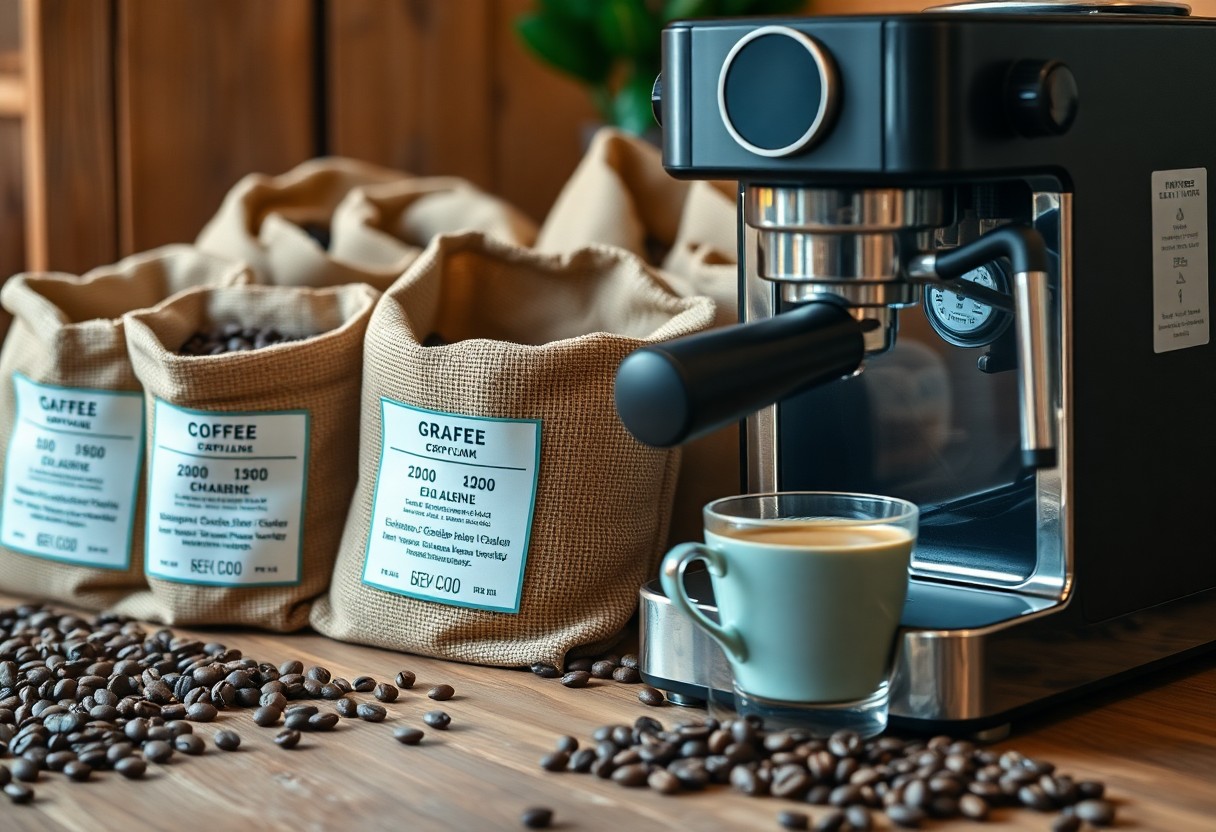
Sustainable Sips: The Ethical Aspect of Choosing Beans
Choosing premium beans isn’t just about flavor; it’s also about the impact your choices have on the environment and coffee-producing communities. Sustainable coffee prioritizes eco-friendly practices and fair wages, leading to a better product for you and a more equitable world for farmers. This commitment to ethical sourcing not only enhances your espresso experience but also supports initiatives that preserve biodiversity and reduce carbon footprints.
The Rise of Organic and Fair-Trade Coffee
Organic and Fair-Trade coffee has gained traction among consumers who prioritize quality and ethics in their purchasing decisions. Instead of relying on synthetic fertilizers and pesticides, organic coffee is grown utilizing natural methods, which helps to maintain healthy ecosystems. Fair-Trade certification ensures that farmers receive a living wage, fostering community development and allowing for a stable livelihood. This shift towards sustainable practices means that you can enjoy your espresso while contributing positively to the lives of growers.
Understanding Certifications and What They Mean
Deciphering coffee certifications can be overwhelming, but understanding these labels enhances your purchasing power as a conscious consumer. Certifications like USDA Organic, Fair-Trade, and Rainforest Alliance signify adherence to rigorous social, environmental, and economic standards. Opting for these certified beans often results in not only higher quality and flavor but also assurance that your coffee supports ethical practices. Familiarizing yourself with these labels can be the key to aligning your coffee habits with your values.
In detail, USDA Organic guarantees that the coffee has been grown without synthetic pesticides or fertilizers, ensuring a cleaner product. Fair-Trade certification focuses on equitable trading conditions and sustainable farming practices, providing farmers with stable prices. Meanwhile, Rainforest Alliance emphasizes conservation and biodiversity, ensuring that the farming methods benefit the environment. Each certification provides you with insight into how your coffee’s production impacts both the planet and the people who cultivate it, allowing you to make informed, intentional choices for your espresso enjoyment.
Final Words
Ultimately, the best coffee for your espresso machine comes down to the quality of the beans you choose. Opt for freshly roasted, premium beans with a profile that complements your taste preferences, whether you enjoy fruity, nutty, or chocolatey notes. Don’t shy away from experimenting with different origins and roasts to discover your perfect cup. Investing in high-quality beans will elevate your espresso experience, ensuring that each shot delivers rich flavor and a delightful aroma. Treat yourself to the finest beans and enjoy the coffee you love every day.
FAQ
Q: What characteristics should I look for in coffee beans for an espresso machine?
A: When opting for beans for an espresso machine, look for a medium to dark roast, as these usually produce a rich crema and fuller body. Beans from regions like Brazil, Colombia, and Ethiopia tend to have a balance of sweetness and acidity, which can enhance the flavor profile. Additionally, freshly roasted beans are important; aim for beans roasted within the last 2-4 weeks for optimal flavor.
Q: Are single-origin beans better for espresso compared to blends?
A: It depends on personal preference. Single-origin beans can offer distinctive flavor notes and unique profiles associated with their specific region, making for an interesting espresso experience. Conversely, blends are crafted to create a balanced flavor and often achieve a more consistent taste. Experimenting with both styles will help you identify which you prefer for your espresso.
Q: How important is the freshness of coffee beans for making espresso?
A: Freshness is extremely important when it comes to making espresso. Coffee beans start to lose their flavor and aroma shortly after roasting, so it is best to use beans that have been roasted recently—ideally within the last few weeks. Proper storage in an airtight container in a cool, dark environment can also help preserve the freshness of the beans.
Q: What grind size should I use for espresso?
A: The grind size for espresso should be fine, similar to table salt. This finer grind allows for a higher pressure extraction, which is necessary for pulling shots of espresso. If your grind is too coarse, the water will flow through too quickly, resulting in a weak and under-extracted shot. Conversely, too fine a grind can cause over-extraction, leading to bitterness. Adjusting the grind size to achieve the right extraction time is important.
Q: How do I determine which roasted flavor profiles I prefer for my espresso?
A: To determine your preferred roasted flavor profiles for espresso, try a variety of beans from different regions and roast levels. Keep a tasting journal to note your thoughts on each coffee’s flavor, aroma, and mouthfeel. Attend coffee tastings, seek recommendations from baristas, and explore different brewing methods to expand your palate. Over time, you’ll discover the beans and flavors that best suit your taste.

